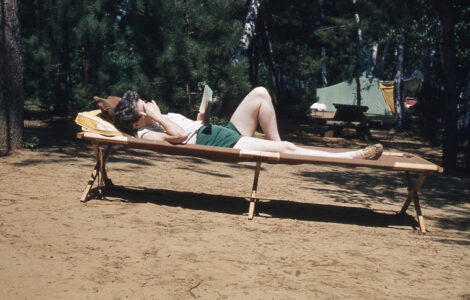‘White House letter of 1907 found here’
- Above, Jim Loeb, and yours truly, on the phone at the news desk when the Enterprise was located at 76 Main St. Jim, always with a cigarette in his left hand, loved coming down the stairs from his office just behind him and helping do the layout for page one.
- The Cupola (Photo provided)

Above, Jim Loeb, and yours truly, on the phone at the news desk when the Enterprise was located at 76 Main St. Jim, always with a cigarette in his left hand, loved coming down the stairs from his office just behind him and helping do the layout for page one.
(Headline from The Enterprise — Aug. 28, 1970)
—
When you read the following story you will understand why the by-line read, Jim Loeb, who was then Enterprise publisher. The Manchester Union Leader in Manchester, New Hampshire is now owned by Joseph McQuaid, a member of that other Loeb family. Talk about connecting the dots of history from Saranac Lake to the White House. A letter found here signed by a Mr. Loeb and given to Mr. Jim Loeb who also knew his way around the White House. He was appointed Ambassador to Guinea and later Ambassador to Peru by President John F. Kennedy … among other high ranking appointments.
The letter
“Bob (not Spiro) Agnew of Saranac Lake has sent us an original letter on White House stationary signed by William Loeb, Secretary to the President (which proved to be too light to engrave.)

The Cupola (Photo provided)
“The letter is dated from Oyster Bay, N.Y., July 5, 1907 and the text is:
‘My Dear Sir: Your letter of the 30th ultimo [in or of the month before the present one] has been received and will be called to the attention of the President, Very Truly Yours, William Loeb’.
“The signer of the letter has no relationship to the author of these paragraphs. It is clear from the date, as well as from the Oyster Bay source that the President in question was Theodore Roosevelt.
“The letter was addressed to Frank M. Baker, who according to Bob Agnew was a railroad commissioner living in Owego, N.Y., Baker’s grandson, also Frank M. Baker lived in Saranac Lake and married Mildred Leonard, and now lives in Florida.
“Agnew purchased the Baker house on Lake Kiwassa and found a number of papers there including the letter from the White House in 1907.
“The Loeb of the letter, has a place in Adirondack history. If you listen to the explanation of one of the dioramas at the Adirondack Museum in Blue Mountain Lake, you will hear that it was in the Adirondacks that William Loeb informed his boss, Vice President Theodore Roosevelt, that, because of the death of President McKinley through assassination, he had become President of the United States.
“The son of that William Loeb is now publisher of the Manchester Union Leader, the largest daily paper in New Hampshire. The present William Loeb would not deny that he is, to put it mildly, an extreme conservative. We have often been accused of blood relationship but we are certain that he resents the suggested kinship as strongly as we do. In fact, we have never met, a circumstance, we feel certain, generally agreeable to both individuals although we can speak for only one.
“Many years ago Thomas Braden, whose syndicated column is carried by the Enterprise, sought to purchase the Manchester paper. But its then owner, the widow of Col. Frank Knox, FDR’s wartime Secretary of the Navy andRepublican candidate for Vice-President with Alfred Landon in 1936, refused to sell the paper to Braden, as she refused to sell the Chicago Daily News to a group headed by Adlai Stevenson. Loeb was given a certain amount of time to raise the required funds and he succeeded.”
—
Local antiquer with Cupola wants house to put under it
I loved Bill McLaughlin’s stories and the above is a typical McLaughlin headline over his typical lyrical sentences in the following abbreviated story; because it is cut off in the scrapbook. But it is about my late friend and neighbor John Hawkinson.
“The historic cupola which topped the Loon Lake Hotel annex is looking for a home and the present owner, John Hawkinson, would like it to go to a museum.
“John is a somewhat museum-minded individual himself whose own domicile on the Harrietstown Road is full of antiques. The trouble with the cupola is that it is sitting on the front lawn at Loon Lake and the property owners around the scenic driveway would like it moved to a permanent site in somebody’s garden or as an artist’s retreat.
“It is the type of problem that John is having trouble solving by himself as the tin-roofed ancient architectural wonder is about 25 feet high and 10 feet to the side. The basic craftsmanship is termed ‘superb’ by those having knowledge of such things. It was built in 1873 to adorn the annex which was recently torn down.
“The cupola was topped off with a weather vane of copper and brass and was an antique that John just missed acquiring on a bid arrangement and timing. One of the workers had risked his neck 100 feet in the air sawing the metal stanchion which held the weather vane in place and lowered it to a waiting and anxious new owner who had beaten John to the scene by minutes.”




